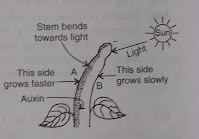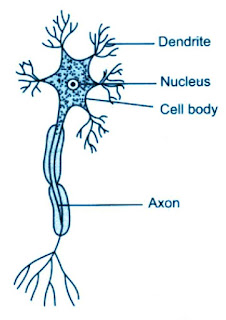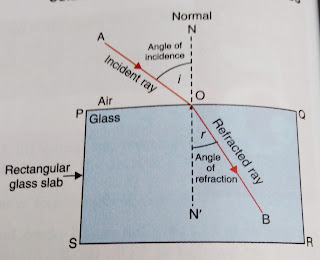NCERT Book Control and Coordination Solution || Class 10
NCERT Book Control and Coordination Solution || Class 10 text book question answer biology for CBSE board.
NCERT book page 119
Question 1: what is the difference between a reflex action and walking?
Answers: reflex action is a nerve mediated, automatic involuntary response a stimulus without consulting the will. It is controlled by spinal cord. It needs an instantaneous response to a stimulus for delay can be harmful.
On Aadhar sise, walking in a straight line is a conscious, voluntary response. It is controlled by a part of hint brain called cerebellum. It does not need an instantaneous response.
Question 2: what happens at the synapse between two neurons?
Answer: at synapse, the electrical impulse generated at dendrite of a neurone is passed on to dinner right of another neurone by axon ending of the first neurone or it is passed on to a muscle or plant to act as ordered by brain or spinal cord. This transmission at synapse is carried out by Chemicals known as neurotransmitter.
Question 3: which part of the brain maintains posture and equilibrium of the body?
Answer: cerebellum, a part of hindbrain is responsible for maintaining posture and equilibrium of the body.
Question 4: how do we detect the smell of an Agarbatti (incense stick)?
Answer: tip of special Nerve cells present in our nose cells called olfactory receptor which detect the smell of incense stick and deliver it to the special part of the brain through the sensory neurone. In this way, the smell of agarbatti is detected by us.
Question 5: what is the role of brain in reflex action?
Answer: reflex action takes place in the spinal cord. only the information that a reflex action has taken place goes on to reach the brain.
NCERT text book solution page 122
Question 1: what are plant hormones?
Answer:certain chemical substances present in plants that control and co-ordinate various activities of plants are called plant hormones or phytohormones. Example auxins, gibberellins, cytokinins and abscisic acid.
Question 2: how is the movement of leaves of the sensitive plant different from the movement of a shoot towards light?
Answer:
Question 3: give an example of a plant hormone that promotes growth.
Answer: Auxin.
Question 4: how do auxins promote the growth of a tendril around a support?
Answer: auxin helps in growth of plant. When the tip of the dental touches a support, then the auxins present on its type moves to the site of teeth which is away from the support, show, due to more auxins in its dental away from the support grows faster.
Question 5: design an experiment to demonstrate hydrotropism?
Answer: take a tin Box with numerous holes at the bottom. Fill it with most saw dust.Sow some gram seeds in it. Keep the tin box in a tilt position as shown in the diagram. When seeds start germinating, Moisten the saw dust again. We will observe that the radical from the germinating seeds come out of the falls under the influence of gravity. However after some growth they bend back and enter the moist saw dust. This experiment demonstrates that roots are positively hydrotropic.
NCERT book page 125
Question 1: how does the chemical coordination take place in animals?
Answer: hormones is the chemical substance whose helps in chemical coordination in animals. These are secreted by endocrine glands
these hormones are directly poured into the blood through which they reach the target tissue or organ to act.
Question 2: why is the use of iodised salt advisable?
Answer: for proper growth of thyroid gland iodine is necessary. Thyroid gland secretes thyroxine hormone. Thyroxine controls Carbohydrate protein and fat metabolism in the body so as to provide the best balance for growth.
In case, iodine is the present in our diet, there is a possibility that we might suffer from goitre. Iodised common salt is a source of Iodine. So as to avoid deficiency of Iodine, iodised salt is recommended.
Question 3: how does our body respond when adrenaline is secreted into the blood?
Answer: adrenaline hormone is secreted in small amount all the time but in large amount when a person is frightened. As a result, the heart beat s Foster to supply more oxygen to our muscles. The blood supply to the digestive system and skin is reduced and more blood is delivered to our muscles. The breathing rate also increases. it also allows more glucose to go into the blood to give us a lot of energy quickly to fight or run away from the fighting situation. So it is often called emergency hormone.
Question 4: why are some patients of diabetes treated by giving injections of insulin?
Answer: in diabetes sugar level in blood increases high. Insulin, a hormone secreted by the pancreas, helps in regulating the blood sugar levels. For this reason, diabetes treated by giving injections of insulin.
Exercise
Question 1. Which of the following is a plant hormone?
a. Insulin.
NCERT book page 119
Question 1: what is the difference between a reflex action and walking?
Answers: reflex action is a nerve mediated, automatic involuntary response a stimulus without consulting the will. It is controlled by spinal cord. It needs an instantaneous response to a stimulus for delay can be harmful.
On Aadhar sise, walking in a straight line is a conscious, voluntary response. It is controlled by a part of hint brain called cerebellum. It does not need an instantaneous response.
Question 2: what happens at the synapse between two neurons?
Answer: at synapse, the electrical impulse generated at dendrite of a neurone is passed on to dinner right of another neurone by axon ending of the first neurone or it is passed on to a muscle or plant to act as ordered by brain or spinal cord. This transmission at synapse is carried out by Chemicals known as neurotransmitter.
Question 3: which part of the brain maintains posture and equilibrium of the body?
Answer: cerebellum, a part of hindbrain is responsible for maintaining posture and equilibrium of the body.
Question 4: how do we detect the smell of an Agarbatti (incense stick)?
Answer: tip of special Nerve cells present in our nose cells called olfactory receptor which detect the smell of incense stick and deliver it to the special part of the brain through the sensory neurone. In this way, the smell of agarbatti is detected by us.
Question 5: what is the role of brain in reflex action?
Answer: reflex action takes place in the spinal cord. only the information that a reflex action has taken place goes on to reach the brain.
NCERT text book solution page 122
Question 1: what are plant hormones?
Answer:certain chemical substances present in plants that control and co-ordinate various activities of plants are called plant hormones or phytohormones. Example auxins, gibberellins, cytokinins and abscisic acid.
Question 2: how is the movement of leaves of the sensitive plant different from the movement of a shoot towards light?
Answer:
Question 3: give an example of a plant hormone that promotes growth.
Answer: Auxin.
Question 4: how do auxins promote the growth of a tendril around a support?
Answer: auxin helps in growth of plant. When the tip of the dental touches a support, then the auxins present on its type moves to the site of teeth which is away from the support, show, due to more auxins in its dental away from the support grows faster.
Question 5: design an experiment to demonstrate hydrotropism?
Answer: take a tin Box with numerous holes at the bottom. Fill it with most saw dust.Sow some gram seeds in it. Keep the tin box in a tilt position as shown in the diagram. When seeds start germinating, Moisten the saw dust again. We will observe that the radical from the germinating seeds come out of the falls under the influence of gravity. However after some growth they bend back and enter the moist saw dust. This experiment demonstrates that roots are positively hydrotropic.
NCERT book page 125
Question 1: how does the chemical coordination take place in animals?
Answer: hormones is the chemical substance whose helps in chemical coordination in animals. These are secreted by endocrine glands
these hormones are directly poured into the blood through which they reach the target tissue or organ to act.
Question 2: why is the use of iodised salt advisable?
Answer: for proper growth of thyroid gland iodine is necessary. Thyroid gland secretes thyroxine hormone. Thyroxine controls Carbohydrate protein and fat metabolism in the body so as to provide the best balance for growth.
In case, iodine is the present in our diet, there is a possibility that we might suffer from goitre. Iodised common salt is a source of Iodine. So as to avoid deficiency of Iodine, iodised salt is recommended.
Question 3: how does our body respond when adrenaline is secreted into the blood?
Answer: adrenaline hormone is secreted in small amount all the time but in large amount when a person is frightened. As a result, the heart beat s Foster to supply more oxygen to our muscles. The blood supply to the digestive system and skin is reduced and more blood is delivered to our muscles. The breathing rate also increases. it also allows more glucose to go into the blood to give us a lot of energy quickly to fight or run away from the fighting situation. So it is often called emergency hormone.
Question 4: why are some patients of diabetes treated by giving injections of insulin?
Answer: in diabetes sugar level in blood increases high. Insulin, a hormone secreted by the pancreas, helps in regulating the blood sugar levels. For this reason, diabetes treated by giving injections of insulin.
Exercise
Question 1. Which of the following is a plant hormone?
a. Insulin.
b. Thyroxine.
c. Oestrogen.
d. Cytokinin
Answer. Cytokinin. ( Auxins and gibberellins are also natural plant hormones)
Question 2. The gap between two neurones is called
a. Dendrite.
Answer. Cytokinin. ( Auxins and gibberellins are also natural plant hormones)
Question 2. The gap between two neurones is called
a. Dendrite.
b. Synapse.
c. Axon.
d. Impulse
Answer. Synapse
Question 3. The brain is responsible for
a. Thinking.
Answer. Synapse
Question 3. The brain is responsible for
a. Thinking.
b. Regulating the heartbeat.
c. Balancing the body.
d. All of these.
Answer. All of these.
Question 4. What is the function of receptors in our body? Think of situations, where receptors do not work properly. What problems are likely to arise?
Answer: The function of receptors in our body is very important as they collect information about changes in the environment around us. Receptors then pass the same information in the form of nerve impulses to the central nervous system, where the information is processed and the ultimate response is given.
Question 5. Draw the structure of a neurone and explain its function.
Answer.
A neurone is the structural and functional unit of nervous system. The neurone receives information from receptors as Electrical impulse, at dendritic end. the impulse done travels from dendrite to the cell body and farther along action to its end. At the end of action, electrical impulse leads to the release of Shyam chemicals. These Chemicals cross the synapse and reach the next neurone pant this process is continue and nerve impulses travel through the body. hence neurones are important in receiving information from the surroundings and in sending it to the effector that is muscle and gland.
Question 6. How does phototropism occur in plants?
Answer. the plant stem response to light and bends towards it due to the action of hormone called auxin. When sunlight Falls only on one side of the stem, the auxin hormone secreted by the stem is collected on the other side of the stem. As a result auxin hormone stay in Shade
No more oxygen on the set site Thomas more growth there, compare to the other site on whose sunlight Falls. Due to this on equal growth, the stem bend towards the sunlight.
Question 7. Which signals will get disrupted in case of a spinal cord injury?
Answer. Reflex actions and involuntary actions will get disrupted in case of a spinal cord injury.
Question 8. how does chemical coordination occur in plants?
Answe: In plants, chemical coordination is brought about by plant hormones. These plant hormones either promote growth or inhibit growth. Five major types of plant hormones are auxin, gibberellin cytokinin, abscisic acid, ethylene.
Auxin gibberellin and cytokinin are referred as growth promoters whereas abscisic acid and ethylene are growth inhibitors.
There is some physiological processes like seed germination and flowering respond to the daily duration of light awards or photoperiods. Plants respond to this photo priodic stimulus buy a specialised pigment called phytochrome.
Question 9. what is the need for a system of control and coordination in an organism?
Answer. When a stimulus act on our body, react in a manner which is in the best for our protection. The reaction involves many organs of our body
so it is necessary that all the constant organs should work with one another in a systematic manner so as to produce the required reaction that is the various organs shoot corporate with one another to provide proper reaction to the stimulus.
Question 10. how are involuntary actions and reflex actions different from each other?
Answer.
Question 11. Compare and contrast nervous control and hormonal mechanisms for control and coordination in animals.
Answer.
Question 12. what is the difference between the manner in which movement takes place in a sensitive plant and the movement in our legs?
Answer.
Answer. All of these.
Question 4. What is the function of receptors in our body? Think of situations, where receptors do not work properly. What problems are likely to arise?
Answer: The function of receptors in our body is very important as they collect information about changes in the environment around us. Receptors then pass the same information in the form of nerve impulses to the central nervous system, where the information is processed and the ultimate response is given.
Question 5. Draw the structure of a neurone and explain its function.
Answer.
A neurone is the structural and functional unit of nervous system. The neurone receives information from receptors as Electrical impulse, at dendritic end. the impulse done travels from dendrite to the cell body and farther along action to its end. At the end of action, electrical impulse leads to the release of Shyam chemicals. These Chemicals cross the synapse and reach the next neurone pant this process is continue and nerve impulses travel through the body. hence neurones are important in receiving information from the surroundings and in sending it to the effector that is muscle and gland.
Question 6. How does phototropism occur in plants?
Answer. the plant stem response to light and bends towards it due to the action of hormone called auxin. When sunlight Falls only on one side of the stem, the auxin hormone secreted by the stem is collected on the other side of the stem. As a result auxin hormone stay in Shade
No more oxygen on the set site Thomas more growth there, compare to the other site on whose sunlight Falls. Due to this on equal growth, the stem bend towards the sunlight.
Question 7. Which signals will get disrupted in case of a spinal cord injury?
Answer. Reflex actions and involuntary actions will get disrupted in case of a spinal cord injury.
Question 8. how does chemical coordination occur in plants?
Answe: In plants, chemical coordination is brought about by plant hormones. These plant hormones either promote growth or inhibit growth. Five major types of plant hormones are auxin, gibberellin cytokinin, abscisic acid, ethylene.
Auxin gibberellin and cytokinin are referred as growth promoters whereas abscisic acid and ethylene are growth inhibitors.
There is some physiological processes like seed germination and flowering respond to the daily duration of light awards or photoperiods. Plants respond to this photo priodic stimulus buy a specialised pigment called phytochrome.
Question 9. what is the need for a system of control and coordination in an organism?
Answer. When a stimulus act on our body, react in a manner which is in the best for our protection. The reaction involves many organs of our body
so it is necessary that all the constant organs should work with one another in a systematic manner so as to produce the required reaction that is the various organs shoot corporate with one another to provide proper reaction to the stimulus.
Question 10. how are involuntary actions and reflex actions different from each other?
Answer.
Question 11. Compare and contrast nervous control and hormonal mechanisms for control and coordination in animals.
Answer.
Question 12. what is the difference between the manner in which movement takes place in a sensitive plant and the movement in our legs?
Answer.




